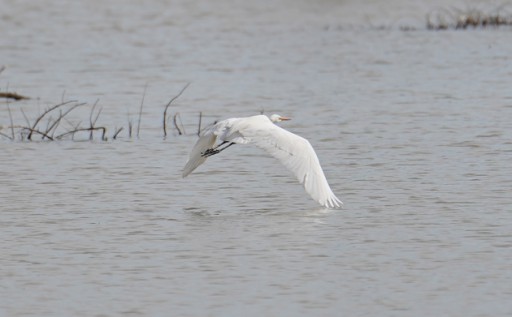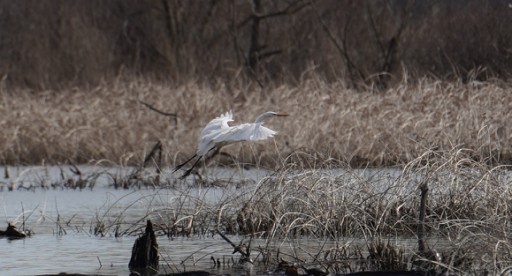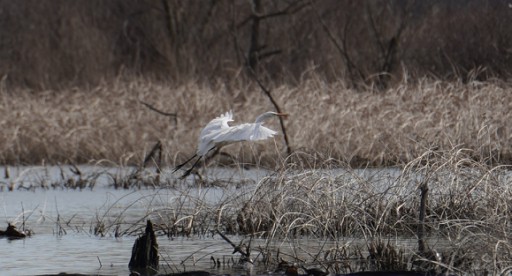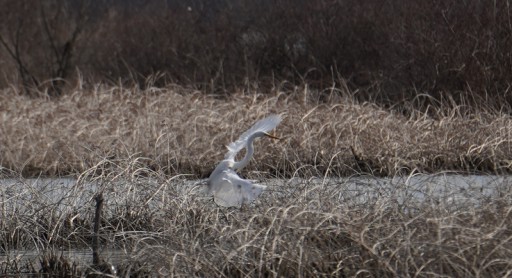Because the light was hazy and the day warm, I thought (or at least hoped) there might be interesting things to photograph. Also, my bike riding partner hadn't had a chance to swap out his winter tires, so it seemed only fair to lug several pounds of photographic equipment to even things up.

ILCE-7C, tamron 70–180mm (at 180mm, natch) f/2.8, e.v. 0, 1/4000 s, ISO 100. All images taken around 9:42, rotated and heavily cropped.
We spotted a couple of these beautiful birds on the shore of a local pond, but all the branches kept messing up the focus, so, while my friend patiently waited, I clambered closer to the water's edge to get a better shot, which had the bonus of getting the bird to take off, and wonder of wonders, some of the images were actually in focus.[1] Even with a 180mm lens, I threw away something like 7/8ths of the original 4000x6000 image.

My fave image. In addition to the other image processing, I cloned out a branch, which you can see in another version at the bottom.
I'm familiar with the common sandhill cranes and great blue herons (which do actually have a white phase, but with yellow legs) but this is not a bird I see often, and I thought it might be the beloved cranes, such as I admired in Viet Nam and Japan.
It's not.
My bird book describes Great Egrets as pure white with black legs (trailing in flight) and a ‘sink pipe bend’ to the neck, which this bird certainly had. And it was huge, definitely within the meter long wingspan.
Given the lack of back plumes and the darkish tip on the bill, this one is perhaps juvenile.

Uncloned version of the image above. I expect many modern wildlife pix have this sort of post-processing.
[1]If I'd been really smart, I would have adjusted from single to burst shot, but it's been awhile since I've attempted to photograph birds—I'm so bad at it, because it really takes more dedication than I'm willing to devote. But every once in awhile I luck out.
Unless otherwise noted, text, image and objects depicted therein copyright 1996--present sylvus tarn.
Sylvus Tarn